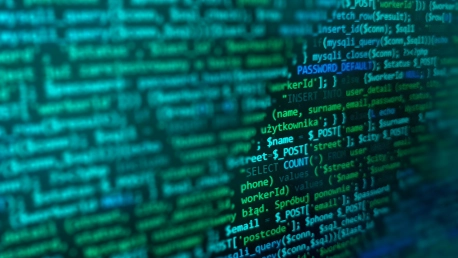The art of data visualization is crucial for interpreting vast quantities of data visually. This skill is indispensable for analysts and developers wanting to illustrate data narratives effectively. Various programming languages and tools are at the forefront of this field, each with particular features that make them suitable for creating impactful visual data stories. These tools are pivotal in the way they help transform complex data into clear and intuitive visual representations. By choosing the right tool, professionals can facilitate a more seamless and productive workflow and deliver more engaging and informative visualizations. This decision can greatly influence the quality and clarity of the final product, making it vital for those in the data industry to master the use of these visualization aids.
Python: The Versatile Choice for Data Visualization
Matplotlib: The Foundational Python Library
Matplotlib is a cornerstone within the Python ecosystem for crafting a wide range of data visualizations. It empowers both beginners and seasoned users, enabling the creation of everything from straightforward plots to sophisticated graphics. This library provides comprehensive control over every aspect of a plot, ensuring that figures can be tailored precisely to any specific requirement. Rich in functionality, Matplotlib excels in producing a variety of charts, such as histograms and scatter plots, and is fully capable of displaying non-Cartesian coordinate systems. For novices delving into data representation, Matplotlib serves as an essential starting point, while its deep customization options satisfy the demands of advanced users. The library’s robust set of features and adaptability ensure it remains a fundamental tool for visualizing data effectively in Python. Its enduring presence is a testament to its utility and the extensive control it offers over the aesthetics of data depiction.
Seaborn and Plotly: Advancing Python’s Visualization Capabilities
Seaborn, an enhancement to Matplotlib in Python, specializes in creating highly aesthetic and informative statistical visuals by leveraging better default styles and color schemes. It is adept at handling complex data with ease, particularly when coupled with Pandas DataFrames, to produce elaborate multivariate visualizations. Conversely, Plotly introduces an element of interactivity to data visualization within Python. Known for its dynamic, browser-based graphics, Plotly stands out for its interactive charts that captivate users, making data exploration a more engaging experience. With capabilities like integrating with Dash to craft interactive web apps or simplifying the sharing process of interactive plots, Plotly bridges the gap between static representations and interactive data analysis. Both Seaborn and Plotly offer distinct benefits for data visualization—Seaborn streamlines the aesthetic presentation, while Plotly focuses on user interaction to enliven the data narrative.
R: The Statistician’s Haven for Data Visualization
The Grammar of Graphics with ggplot2
R language is closely entwined with statistics, and its visualization prowess is best demonstrated by ggplot2, a package rooted in the Grammar of Graphics. This innovative approach treats plots as layered constructions, allowing for the seamless integration of various graphical components. ggplot2 stands out for its ability to craft visuals that not only look professional but also effectively convey complex data narratives. With relatively brief snippets of code, users can produce intricate charts that enhance the interpretation of statistical information. The package, due to its layering philosophy, empowers users with a flexible tool to create detailed and accurate graphical representations, pivotal in statistical analysis. Its capacity for generating clear, informative visuals is one of the reasons behind its popularity among data analysts and researchers, who rely on it to illustrate their findings with precision and clarity.
Combining Computation and Visualization
R’s ecosystem, particularly with packages like dplyr and tidyr, streamlines the data management workflow, effectively bridging the gap between transformation and visualization. This integration negates the need to juggle diverse tools, significantly enhancing productivity. R’s true power shines in the seamless transition from robust data manipulation to constructing sophisticated visual representations. The graphics generated are not only visually appealing but also deeply embedded with the statistical analyses performed within R, allowing for comprehensive storytelling with data. Data scientists benefit immensely from this harmony, as they can delve into complex data explorations while having the tools to represent their findings through compelling visuals. This synthesis of visual and analytical capabilities positions R as an invaluable asset to those looking to perform nuanced data analysis and communicate results effectively, all within a single environment. The platform’s ability to handle advanced statistical methods and portray them graphically gives users a unique advantage in distilling insights from data.
JavaScript and D3.js: Interactive Web-Based Visualizations
Harnessing the Power of D3.js for Dynamic Displays
D3.js stands out in the realm of JavaScript libraries for its exceptional ability to bring data to life in web visualizations by binding data to the Document Object Model (DOM). This binding allows for dynamic adjustments of properties with data changes, enabling rich interactive experiences. Imagine charts, graphs, and complex visual narratives that not only catch the eye with their aesthetic appeal but also pivot and morph with live data, engaging and informing viewers in real-time. This adaptability is invaluable for applications that rely on up-to-the-minute data, such as interactive dashboards or intricate, data-driven stories where maintaining user engagement is essential. With D3.js, every update in the dataset can trigger a responsive change in the graphical representation, ensuring that the visual display is a true reflection of the current state of the data. This capability to synchronize data and its visual storytelling, with smooth transitions and animations, makes D3.js the go-to library for developers looking to elevate the data visualization experience on the web.
SQL: The Gateway to Visualizing Large Datasets
SQL and Visualization Tools Synergy
SQL is crucial for managing vast databases and refining data for visualization, despite not generating visuals itself. Its sophisticated queries organize and clean data, making it ready for graphical representation. Tools like Tableau and Power BI then turn this structured data into engaging visual insights. This underscores SQL’s integral role in the data preparation stage of visualization. As such, SQL acts as the indispensable engine that readies data for these tools to display it in a meaningful way, illuminating trends and patterns that might otherwise remain hidden in raw datasets. Together, SQL and visualization software form a vital partnership in the data analysis process, with SQL doing the heavy lifting in data manipulation to ensure that visual tools can effectively communicate the stories behind the data.
Julia: High-Performance Visualization for Scientific Computing
Achieving Speed and Efficiency with Julia
Julia has made significant waves in data science with its ability to efficiently process big data and perform at high speeds, traits essential for scientific computing and data visualization. It excels at managing large datasets and solving sophisticated algorithmic problems, while offering a user-friendly syntax reminiscent of Python and R, making it a favorite among data professionals. The introduction of the Plots.jl package in Julia further enhances its appeal by offering a streamlined plotting interface that integrates effortlessly with Julia’s computational functions. It pairs rapid computational abilities with simplicity of use and high-quality visual output, positioning Julia as the optimal choice for data scientists who need to balance speed and usability in their work with complex and sizable datasets. The convergence of these features ensures Julia’s growing prominence in data analytics and scientific research areas requiring robust data examination and visualization tools.
Tableau: Visual Analytics for the Non-Programmer
Drag-and-Drop Simplicity with Deep Insights
Tableau has transformed the landscape of data visualization, making it accessible to a wider audience by simplifying the analysis of large datasets. Its user-friendly interface enables individuals without extensive programming skills to delve into data discovery. With its intuitive drag-and-drop functionality, users can create complex dashboards and insightful reports with ease.This tool has the capability to connect to a multitude of data sources, enhancing its utility for collaborative and inclusive data-driven decision-making processes. Tableau’s innovations in user-centric design allow even novices to elucidate trends and patterns that would otherwise remain obscured in raw data. It thus empowers a diverse range of users with the tools necessary for effective business intelligence. By bridging the gap between data and decision-makers, Tableau stands as an integral resource for organizations striving to leverage information for strategic advantage.
Java and Scala: Enterprise-Level Data Visualization
Java: Robust Visualizations in Corporate Settings
Java is renowned for its robust and secure platform, making it an ideal choice for enterprises in need of stable data visualization tools. The language supports various libraries such as JFreeChart, which specializes in crafting a wide array of charts, and JavaFX, known for developing sophisticated rich internet applications. These features contribute to Java’s status as a go-to for developers who aim to integrate complex data analysis with user-friendly graphical interfaces in their applications.Java’s strength lies in its ability to handle intricate data with ease while producing insightful and practical visual representations. This balance is crucial in corporate settings where data integrity and precision are paramount. Java’s scalability also plays a critical role in its preference for business applications, as it supports the growth and evolution of enterprise needs over time. By marrying rigorous data processing capabilities with accessible visualization options, Java serves as a reliable bridge that connects analytical depth with clarity and ease of interpretation for end-users.
Scala: Big Data’s Ally in Visualization
Scala, in concert with Apache Spark, is a powerful duo for big data projects. It allows for high-speed analysis and turning expansive datasets into insightful visual stories with ease, thanks to Scala’s concise code and Spark’s rapid in-memory processing. It has become the go-to for complex analytics and visualizing big data insights.The realm of data visualization hosts a spectrum of tools and languages, suited for various facets of data storytelling. R’s statistical graphics, D3.js’s web interactivity, the simplicity of Python’s libraries, and Java’s enterprise capabilities offer a diverse toolkit for data analysts and programmers. Data visualization is a constantly advancing field, fueled by the diverse tools available that help to reveal the stories hidden within vast quantities of data.









